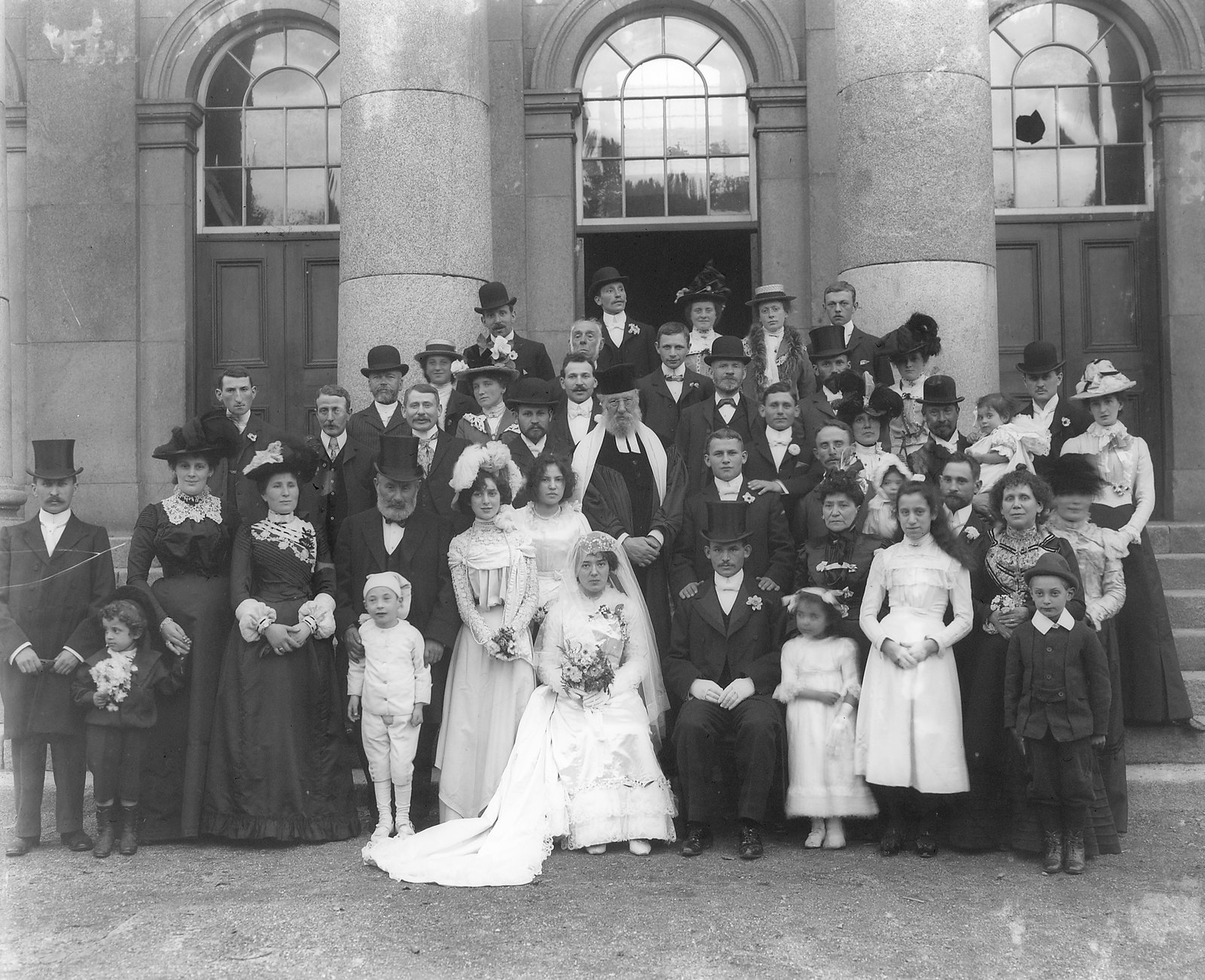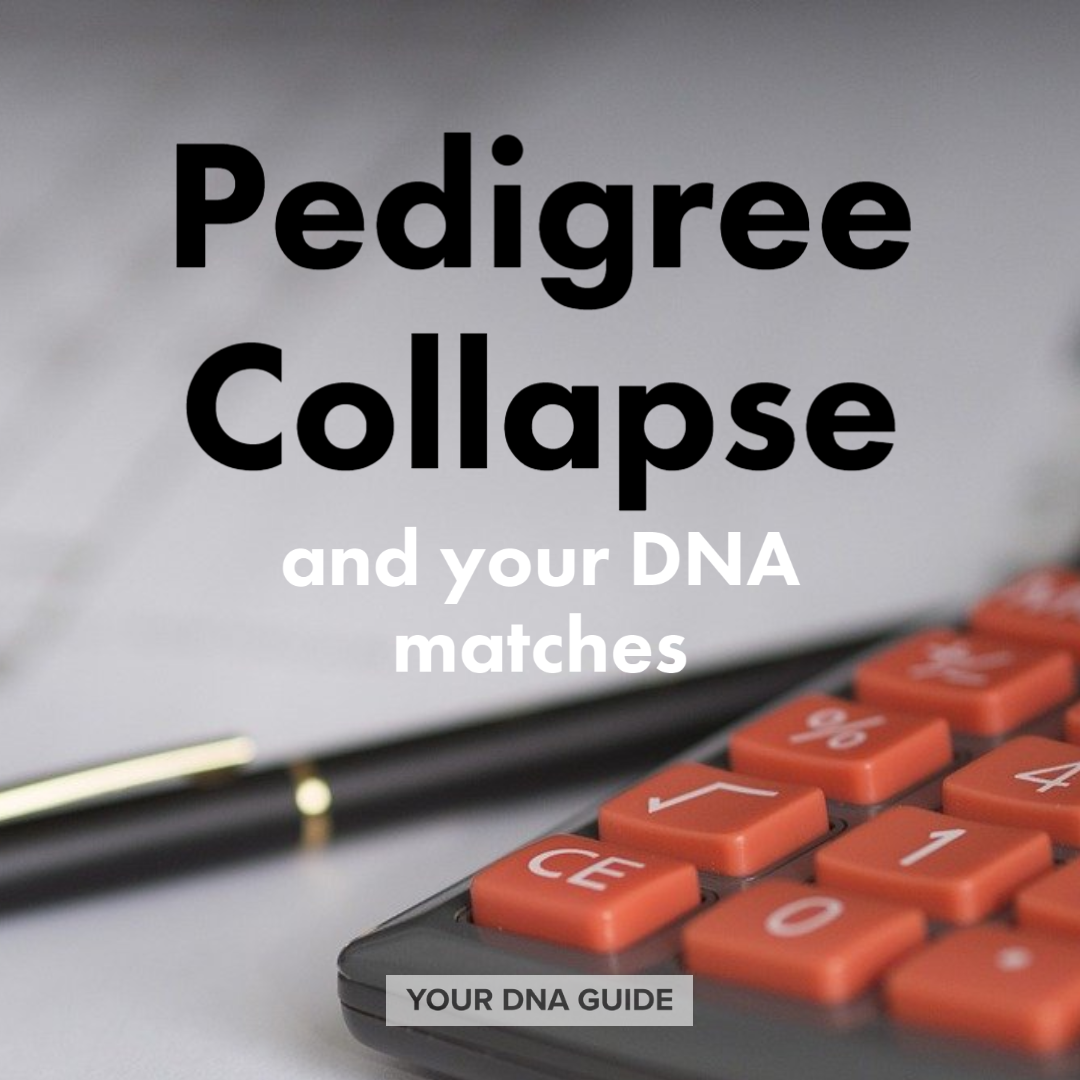What is endogamy? This introduction to endogamy helps you understand what it is and how it can complicate genetic genealogy analysis. Learn a crucial tip for spotting endogamous relationships on your DNA match list.
 What is endogamy?
What is endogamy?
As DNA analysis becomes more mainstream in genealogy research, there is one group of genealogists who may feel a little left behind, as DNA testing does not seem to produce the kinds of eureka moments for them as it does for others. These are the genealogists who have endogamy in their family history.
Endogamy
is the practice by a community of marrying within its defined culture or location.

Jewish and Acadian are good examples of historically endogamous communities. Endogamy is more than just a cousin marriage in your family tree. While those can be tricky to reconcile with your DNA results, they can often be fairly straightforward, especially if you already know about the relationship.
Intermarriage and DNA
For example, let’s say your mom’s sister Susie married your dad’s brother Bob. Normally, your mom’s sister’s children would be your first cousins, and your dad’s brother’s children would be your first cousins. That relationship would bring a certain amount of DNA with it. But in our example, you are first cousins on your mom’s side and first cousins on your dad’s side. So you will actually share two times the amount of DNA that first cousins share. This is fine, as long as you understand that.
But things get tricky when you have your DNA tested and the company has no way of knowing what you know about your family. So when your double first cousin is tested, the company may call them your half-sibling, as double first cousins share about the same amount of DNA as half siblings. When this situation happens in the generation before us, it is pretty easy to catch. But if the same scenario was true between a set of your great-grandparents, the relationships between you and your second cousins will be affected in your DNA, and could be trickier to figure out. You CAN figure it out, though. Our two-part article series on pedigree collapse includes how to adjust your shared DNA calculations for a known instance.
But true endogamy is the above situation repeated over and over and over again in your family history so that in general, you share too much DNA with all of your cousins, given their actual genealogical relationships.
How endogamy complicates DNA test results
At the outset, doing genealogy when you have endogamy might seem a bit easier. After all, where others have to find 8 sets of great grandparents, people who have endogamy often have fewer, maybe just five or six great grandparents to document, because the same couple appears on multiple lines.
However, the DNA part of endogamy research is much much more difficult. Many times you will share DNA with others in your endogamous community not because you share a single recent common ancestor, but because you likely share multiple more distant common ancestors.
How to spot endogamous relationships
One way to help you tell the difference between someone who is closely related and someone who shares DNA because of endogamy is to pay attention not just to the total amount of DNA shared, or your relationship prediction, but to look at the size of the pieces of shared DNA. All of our testing companies provide this information. Here’s a screenshot of a father-daughter genetic relationship described at MyHeritage, showing the total amount of shared DNA, how many segments are shared, and the length of the largest segment:

Looking at the size of the biggest piece of DNA, you want that piece to be larger than 20 cM. If the biggest piece is smaller than that, it is unlikely you are related recently, and you can chalk up all that shared DNA to the tight-knit nature of your ancestral community, and not waste your time looking for a common ancestor.
 We cover this strategy (and others!) in our Endogamy and DNA Course. Developed and tested by our expert DNA team, this Course teaches straightforward strategies for addressing endogamy more productively. We’ll help you tease apart whether you’re looking at endogamy, multiple relationships…or maybe some of each. We’ll help you set reasonable goals for your DNA analysis. And we’ll share the nuances in how the various testing companies adjust (or not) for endogamy, so you can understand what you’re seeing in your AncestryDNA, 23andMe, MyHeritage, or Family Tree DNA results.
We cover this strategy (and others!) in our Endogamy and DNA Course. Developed and tested by our expert DNA team, this Course teaches straightforward strategies for addressing endogamy more productively. We’ll help you tease apart whether you’re looking at endogamy, multiple relationships…or maybe some of each. We’ll help you set reasonable goals for your DNA analysis. And we’ll share the nuances in how the various testing companies adjust (or not) for endogamy, so you can understand what you’re seeing in your AncestryDNA, 23andMe, MyHeritage, or Family Tree DNA results.
Check out Endogamy & DNA Course
You can do the DNA—and we can help!
We’re here to help you every step of the way in your genetic genealogy journey. We’ve put together resources to help you learn what to do next with your DNA results. Get started with our free guide, Finding Ancestors with DNA.


